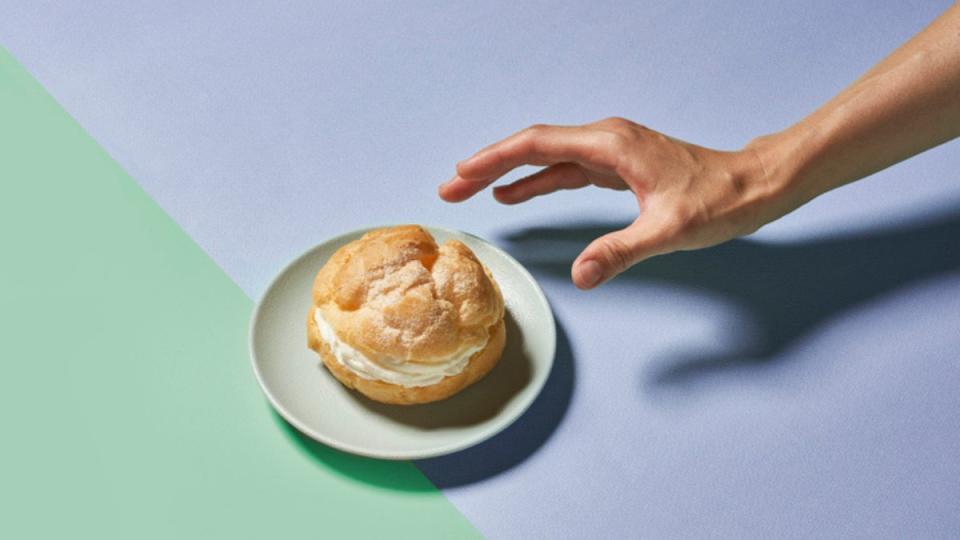The 6 Healthy Eating Hacks Experts Want Woman Over 50 To Know
Let's face it: Between busy schedules, tempting treats and the allure of convenience foods, sticking to a healthy diet can be a challenge. Thankfully, healthy eating hacks can help you reach your wellness goals without feeling deprived. We asked experts to break down what tricks actually work, plus how to effortlessly incorporate them into your daily life.
Why it’s hard to maintain healthy eating habits
Surveys show 3 in 5 US adults say they’ve tried to diet at least once, yet 79% ended up reverting to old eating patterns or giving up altogether. The takeaway? Maintaining good nutrition is hard! Some barriers that stand in the way:
1. Lack of healthy food options
America is the land of plenty. Grocery stores have everything you could ever want, but according to Joan Ifland, PhD, FACN, a fellow of the American College of Nutrition and a food addiction expert, much of isn't nutritious. In fact, more than 71% of the items available at the supermarket are ultra-processed. In other words, the "good" options are limited.
2. Doing too much, too quickly
When trying something new, we often want instant results. But “having an all-or-nothing mentality and going ‘cold turkey’ from our usual food choices just isn’t sustainable,” says Samantha Coogan, MS, RDN, LD, FAND, Program Director of Nutrition & Dietetics at the University of Nevada Las Vegas. Plus, restricting what we eat can trigger uncontrollable cravings. “This then leads us down the road of guilt and shame for ‘not having enough willpower’ or ‘falling off the wagon'," Coogan adds.
3. Intense cravings
Those cravings Coogan refers to are very real, and they influence many of our decisions. This isn’t a failure, but a product of our biology. “Cravings happen in the midbrain and rational thought occurs in the frontal lobe,” explains Ifland. “The midbrain is much more dominant than the frontal lobe, so these cravings end up driving our behavior.”
The processed food industry knows this. It’s part of what Dr. Ifland calls the “cravings business model." And, since cravings are more powerful than rational thought, we can end up becoming servants to them. (See how noshing on almonds for weight loss helps shut off cravings.)
Check out the video below to to learn how sugar, especially, affects the brain:
4. Busy schedules
"We live very busy lives, and in order to eat healthy, you really have to do a certain amount of planning,” says Sue Decotiis, MD, a triple-board certified weight loss doctor practicing in New York City. “You’ve got to go the supermarket and have healthy foods in the refrigerator.” Not only that, but many healthy foods require preparation. “That takes time. So if you work a long day and you’re tired, it’s often easier to pick something up on the way home,” Dr. Decotiis adds.
The 6 best healthy eating hacks
Ready to get your nutrition back on track? Dr. Decotiis advises “dipping your toe in the water” rather than diving in head-first. And these healthy eating hacks make doing that a breeze.
1. Pinpoint your triggers
“Cravings will always win," Ifland says. "So a really good place to start is just noticing what’s causing your cravings and what the cravings are for."
Alyssa Wilson, RD, a registered dietitian and metabolic success coach at Signos, echoes this advice. “Identify the ‘why’ or trigger behind your urge to eat," she says. "Are you truly hungry or are you dehydrated?” Sometimes, heightened emotions cause cravings, too.
Regardless of the cause, “it’s important to avoid feeling guilty or shameful about food thoughts,” Wilson says. “They’re completely normal and we all experience them.” By taking a step back and evaluating those urges, it’s easier to make better decisions.

2. Set SMART goals
Remember Dr. Decotiis’ advice about easing into the pool? That’s where SMART goals come in. SMART stands for “Specific, Measurable, Attainable/Achievable, Realistic and Timely/Time Bound,” says Coogan. “When people try to overhaul everything at once, it becomes overwhelming and places a negative connotation on those previous patterns. Making smaller, attainable progress will help you maintain your new habits long-term.”
Two SMART goal examples from Coogan:
SMART Goal 1: “I will add 1-2 servings of vegetables (prepared to my desired preference) at lunch and dinner each day of the week.”
SMART Goal 2: “I will consume 24 oz. more fluid each day of the week.”
Both of these goals are simple, measurable, attainable and realistic. They’re also time-sensitive, so you can track your progress.
3. Buddy up
“Humans really like belonging, fitting in and being accepted,” says Ifland. “If you want to eat healthily, but your family is having pizza for dinner, it’s normal to feel uncomfortable or left out if you’d prefer a steak, salad and a sweet potato instead.”
One of the most enjoyable healthy eating hacks our experts recommend? Spend more time with like-minded friends. Ifland suggests asking the five people you see or interact with the most to join you on your healthy eating journey. Whenever possible, eat with them — even if it's virtually. “The cool thing about Zoom is that your five people could be anywhere in the world,” Dr. Ifland says. “You might be eating breakfast, while your friend in Europe is eating lunch.”
4. Add rather than subtract

Many of us associate healthy eating with deprivation, but Coogan says a better approach is “to think of what you can add to your eating patterns instead of what you should be subtracting.” Here’s what that looks like, using the SMART goal of eating more vegetables (see hack #2):
“Adding 1-2 servings of vegetables at lunch and dinner each day will provide more fiber which is essential for gut health and helps me feel fuller longer.” The goal of adding food to your plate is much more constructive than thinking about giving up an unhealthy side dish, for example.
“Positive mentality naturally fosters a growth mindset and helps build self-confidence,” Wilson says. “Plus, it reframes your health journey in a positive light instead of a chore or something you ‘must do’.”
5. Spice things up
Think healthy eating means flavorless food? Not so! Sauces and seasonings are one of the most delicious healthy eating hacks. A study in Food Quality and Preference found that when vegetables were seasoned with spices and herbs, folks were more likely to eat them.
“What’s the point of adding something to your plate if you won’t even eat it anyway?” Coogan asks. “I’d rather someone make their vegetables taste good to get the nutrients than not eat them at all and get none of the nutrients. If you prefer a little butter or cheese sauce to help you eat that broccoli, by all means, do it.”
Even better? "Herbs and spices offer health-promoting properties,” Wilson says. For instance, cinnamon may steady blood sugar, garlic may support heart health and ginger may relieve gastrointestinal issues. (Bonus: Discover how the spice turmeric can help you lose weight.)
6. Snack before shopping

Worried that visiting the grocery store or eating at a restaurant could disrupt your healthy eating goals? Don’t be! Instead, “make sure you’re adequately fed before heading out to shop," Coogan suggests. "You’ll make more rational decisions and stick to your grocery list better.”
Dr. Decotiis agrees, noting that “it’s good to have a little snack before going out for Mexican food or attending a party where there’s going to be a lot of different courses served.” There’s no right or wrong way to prepare, but Dr. Decotiis suggests drinking plenty of water (which helps you feel full) and snacking on something like apple slices and peanut butter.
For more nutrition tips that improve your health:
Nutrition Pro: Hidden Food Sensitivities May Stall Weight Loss — This Gut Healing Diet Can Help
Top Nutritionist Calls This Natural Sunflower Powder a ‘Fat Flushing Accelerator’
Hybrid Fruits Are the Trendy Treats Nutritionists Are Raving About — Here’s Why
This content is not a substitute for professional medical advice or diagnosis. Always consult your physician before pursuing any treatment plan.
Solve the daily Crossword

